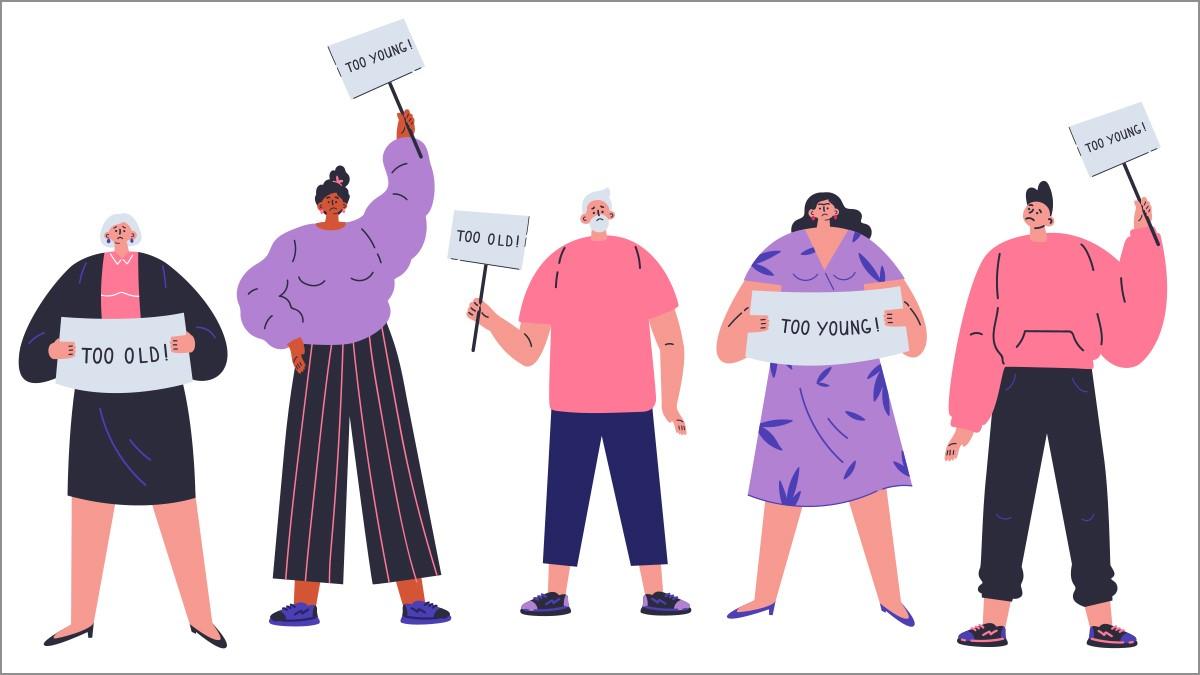What counts as age discrimination at work and how does the law protect individuals?

In the latest NHS Staff Survey – run throughout NHS trusts in England in 2020 – six per cent of physiotherapy staff reported personally experiencing discrimination from patients and service users at work. A further five per cent reported experiencing discrimination from their own colleagues. Of those, over a quarter reported that the discrimination they faced had been based on their age.
The National Audit Office has previously described age discrimination as an ‘ongoing and significant problem’ which costs the UK economy between £19 billion and £31 billion a year in lost output, reduced taxes and increased welfare payments.
What is the law on age discrimination?
- individuals of any age are protected by law from age discrimination at work
- the law giving workers in England, Wales and Scotland protection from age discrimination is called the Equality Act 2010. There is a separate but similar law in Northern Ireland
- workers inside and outside the NHS are covered by this law
- it is against the law to force someone to retire at 65 or any other age fixed by the employer without objective justification
- the law protects all types of worker including contract workers, temporary workers, casual staff and self-employed workers where they are personally engaged to do the work. It also covers job applicants.
Are young people protected from discrimination?
The legal protection against age discrimination covers people of any age.
Age discrimination at work can occur across all age groups but is more common in the younger and older age ranges, such as under 25s and over 50s.
Eight out of 10 young people believe that age discrimination is widespread. Young workers report bullying, being asked to do all the menial tasks, and being over-looked for promotional opportunities.
There are stereotypical notions about the abilities of different age groups. But research suggests that most of these are myths, and that the differences between people of the same age are more pronounced than the differences between people of different age groups.
What things count as age discrimination in law?
The types of employer conduct that might be considered age discrimination under the law range from the more obvious – turning someone down for a job because of their age or assumed age, for example – to procedures that indirectly disadvantage people of a certain age group.
The most obvious form of unlawful age discrimination is when the employer treats someone less favourably than they would treat someone of a difference age.
This is direct discrimination.
An employer doesn’t have to know someone’s precise age to be guilty of direct age discrimination.
An example could be a recruitment advert that implies people of a certain age are more welcome.
Unlike with other areas of discrimination, an employer can in some cases justify direct age discrimination if they have a ‘legitimate aim’ in doing so.
An employer might be guilty of indirect discrimination if it has a way of operating that works to the disadvantage of a certain age group.
An example would be insisting on a work pattern that could disproportionately affect people of an age to have childcare commitments.
Age-related harassment can also be unlawful discrimination and covers behaviour that creates a degrading or humiliating environment, such as making comments that associate older people with incompetence or younger people with irresponsibility.
If an employer treats someone differently because they have previously complained about age discrimination, they may be guilty of unlawful discrimination in the form of victimisation.
Can employers give special help to older or younger workers?
- The Equality Act allows an employer, training provider or trade union to grant a certain age group or groups access to training or encouragement to take advantage of opportunities to do work, where people of that age group are disadvantaged in relation to work because of their age.
- For example, they could assist older workers with IT training to help them access roles if they lack those skills.
- See Section 9 of the CSP Equality and Diversity toolkit and read about the CSP’s one-year pilot for equality reps.
Number of subscribers: 1
